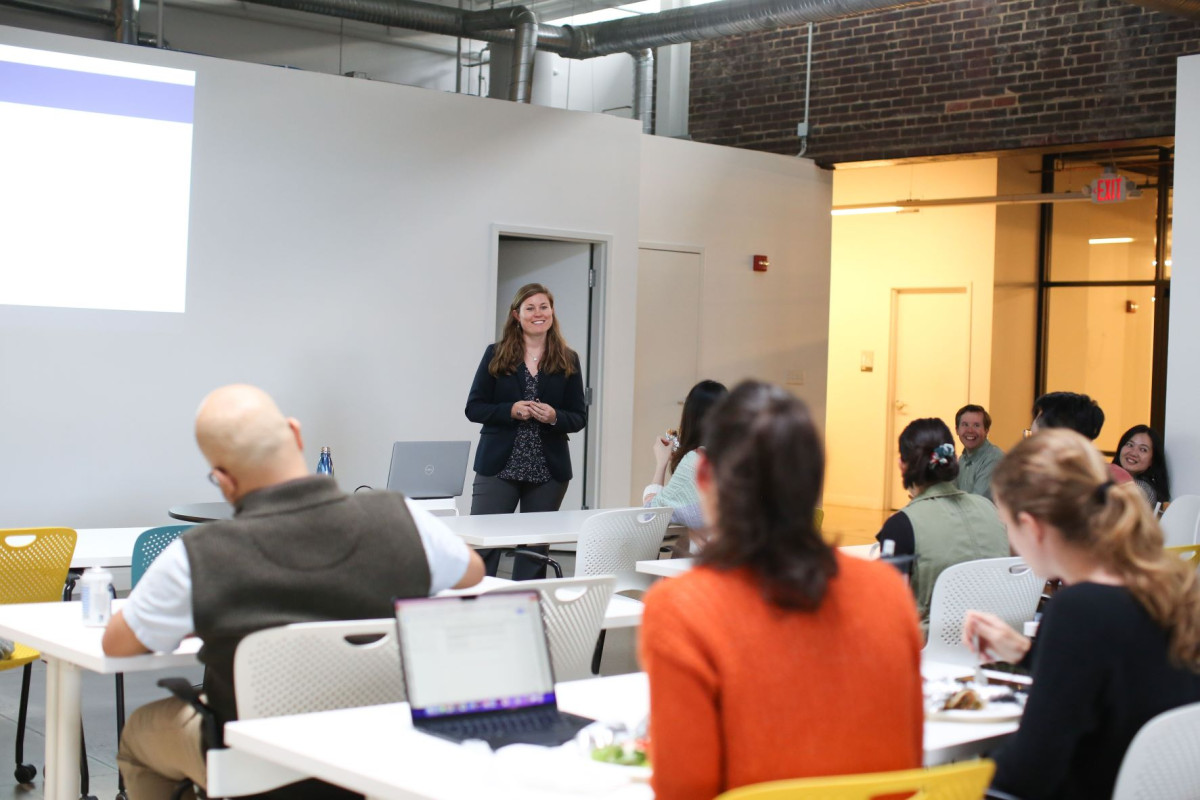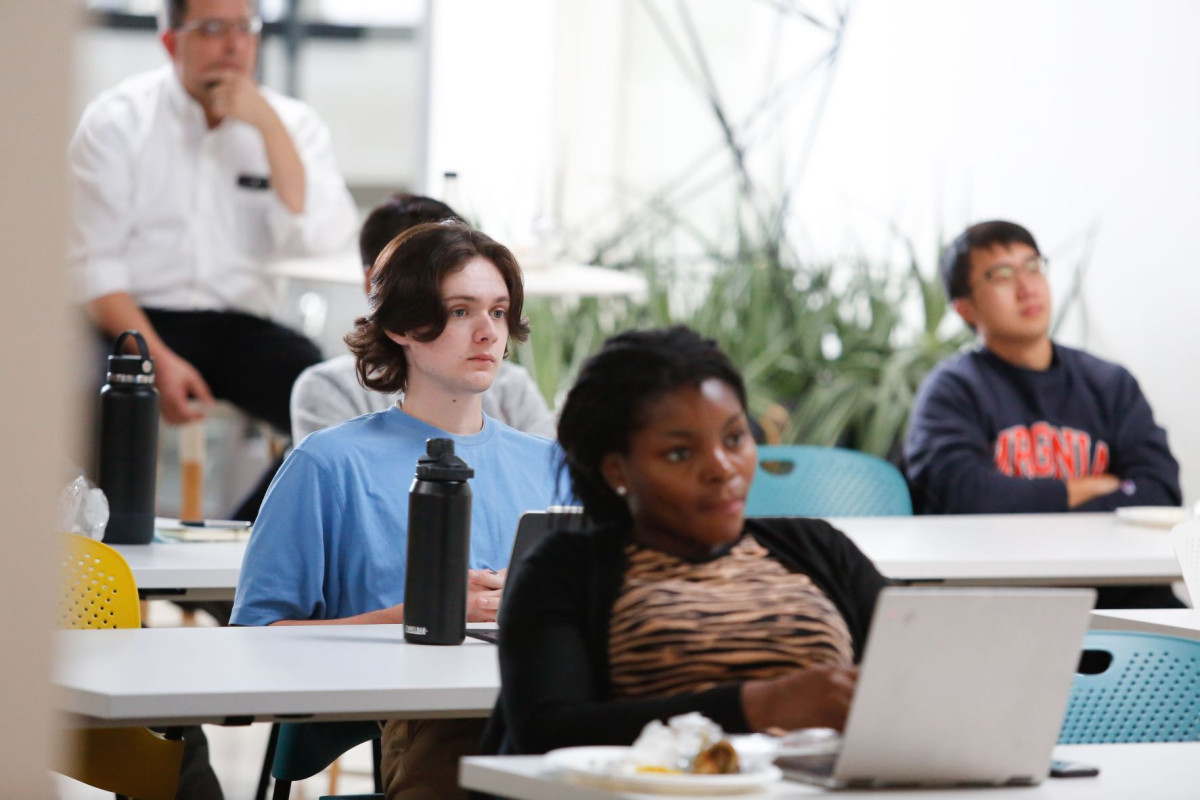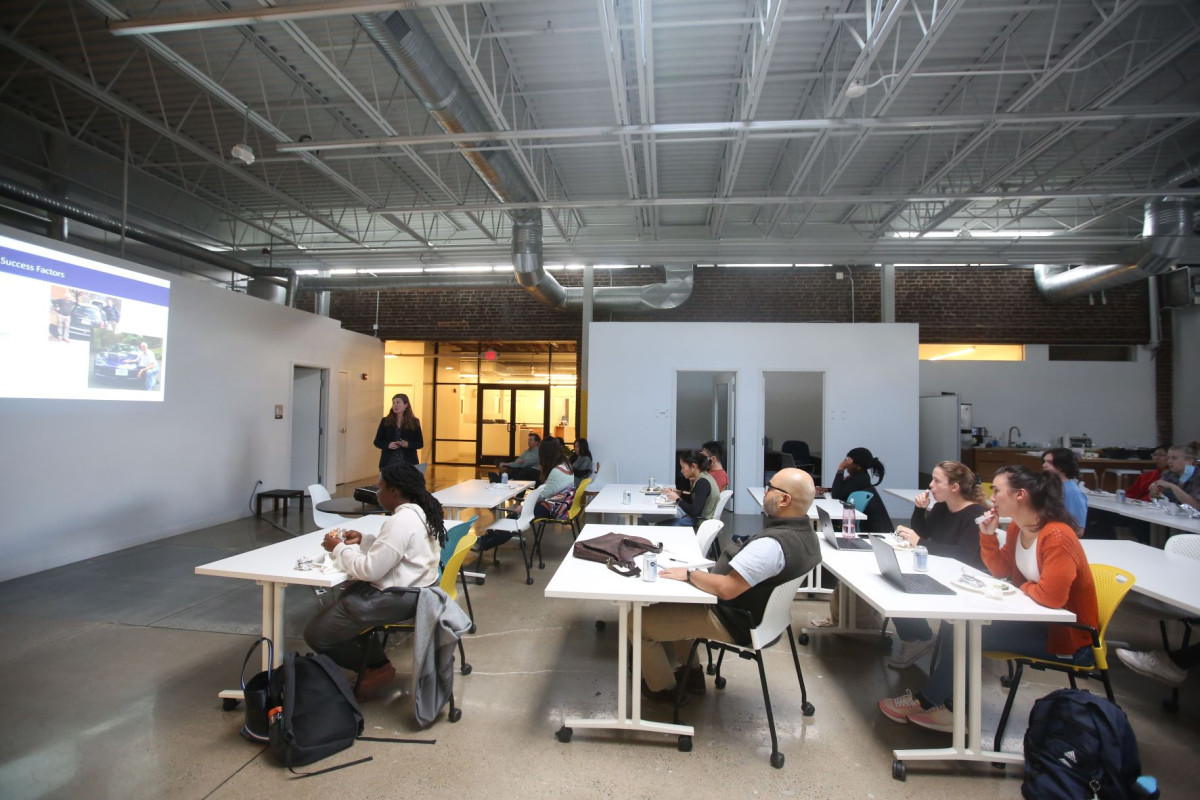A Thirst For Knowledge: Record-Breaking 29 Students Signed Up For LVG’s Workshop
Dec. 1, 2022
One by one, the University of Virginia students rolled into the UVA Licensing & Ventures Group’s offices inside the old Coca Cola building on Preston Ave., taking a seat at tables that had been set up inside a spacious meeting room.
It wasn’t long before there were no seats left.
There were undergraduate and graduate students, research residents, post-doctorate fellows. They hailed from the School of Medicine, the School of Engineering and Applied Science and the College of Arts & Sciences.
In all, a record 29 students registered.
They had one thing in common: A desire to understand the technology commercialization process.
From how to disclose and patent an invention, to how to market it, license it and all of the many other steps along the way.
For students who have spent most of their time in labs, and even ones who haven’t, commercialization can often be a daunting desk.
This is what has made the annual LVG workshops so attractive, according to LVG Director of Licensing Josh Mauldin.
“Whether they choose to pursue a career in intellectual property or continue to work in research, they come away with a stronger understanding of intellectual property, and appreciation for the important role of intellectual property in translating new ideas and inventions into the marketplace,” Mauldin said, “so that if they come up with an invention, or one of their colleagues or friends come up with an invention, they reach out to us to capitalize on the idea before it’s too late, as there is a finite window of time during which IP protection can be pursued.”
LVG Licensing Associate Cortney Mushill says the workshops also provide an understanding of why technology transfer is necessary, and their benefits to UVA and the Charlottesville community.
“They prompt the students to engage with us or encourage their PIs to engage with us,” Mushill said, “and provide a perspective of life outside of the lab -- a way they can apply their technical knowledge outside of the lab.”
That was precisely why Jack Whitewolf decided to attend the workshops that took place over two nights at LVG headquarters. Whitewolf, a biomedical engineering graduate student, is part of a team planning to pursue a patent for a novel material system that can help generate complex vasculature without the need for advanced instruments.
“Currently, modeling the vasculature tends to be a challenging process only done in labs with specific technical prowess and resources,” Whitewolf said. “We want to create in our system complex vasculature that better captures the characteristics of human vasculature, at the same time making the process accessible and reproducible, in hopes of helping the field better understand vasculature and the events that affect it.”
Whitewolf added: “Vasculature is the primary source of nutrient and oxygen supply to all parts of the body tissues, so pathological changes and traumatic events that affect the vasculature can mean huge effects and damages to the body. Understanding how vasculature is influenced by drugs, treatments and the presence of disease are necessary to designing better therapies for a range of diseases.”
In her lab work, biology graduate student Sarah Hunter-Chang is studying Wallerian Degeneration, a process that results when a nerve fiber is cut or crushed and degenerates. During Wallerian Degeneration, bubble-like “spheroids” form and rupture, releasing inflammatory content into the surrounding area.
“If that content is able to reach other cells in the nervous system, it could drive the progression of any neurodegenerative disease or pathology, including both ALS and Alzheimer’s,” Hunter-Chang explained.
“We’re trying to understand if and how the body controls inflammatory signal release from spheroids using phagocytes, cells that can eat bits of dead or dying cells, including spheroids. If we understood this process, we would have a whole new avenue of potential treatment options for neurodegeneration. Then we could try targeting spheroids or their interactions with phagocytes, which nobody has known to do before.”
Hunter-Chang said she is working on an innovation that can be applied to a number of neurodegeneration pathologies.
“I can’t say too much about it here, though, because the Licensing & Ventures Group workshop taught me to avoid premature disclosures!” Hunter-Chang said. “I’m still figuring out what the process of patenting these would look like in the context of what we learned at the workshop, but it would thrill me to try patenting them and even seeing them on the market someday.”
Understanding the patent process was precisely why School of Engineering undergraduate Colin Halligan came to the workshops. Halligan has aspirations of becoming a patent attorney.
“I really enjoy being able to understand how new technologies work,” Halligan said. “Additionally, I am a firm believer in sustainability, and becoming a patent attorney grants me the opportunity to advocate and promote sustainable technologies.”
Halligan, Hunter-Chang and Whitewolf -- who hope to take part in LVG’s spring internship program -- say the workshops were a godsend.
“They gave me a great foundation and have led me to a place where I now know what questions to ask,” Halligan said. “I have a better understanding of how the whole process works.”
Since the workshops, Whitewolf said he has found himself thinking about commercialization potential of projects more than ever.
“I think this is something that often gets overlooked in many academic research projects but are inherent to the products that eventually make it to the public,” Whitewolf said. “This will definitely help me shape and think about my future projects and make my research more impactful.”
Hunter-Chang was extremely grateful for the advice she received.
“I thought it was amazing to have access to so much expertise in so many topics all in the same room,” she said. “How often does a patent lawyer just say, ‘Ask me anything,’ and it’s all free to you?
“And having someone walk us through a road map of the research-to-patent-to-market process was great. Since the workshop pointed out the importance of finding the right corporate partners for the right stages of development, I’ve definitely been thinking more about what that means for me and how I can find those partners when I'm ready.”


